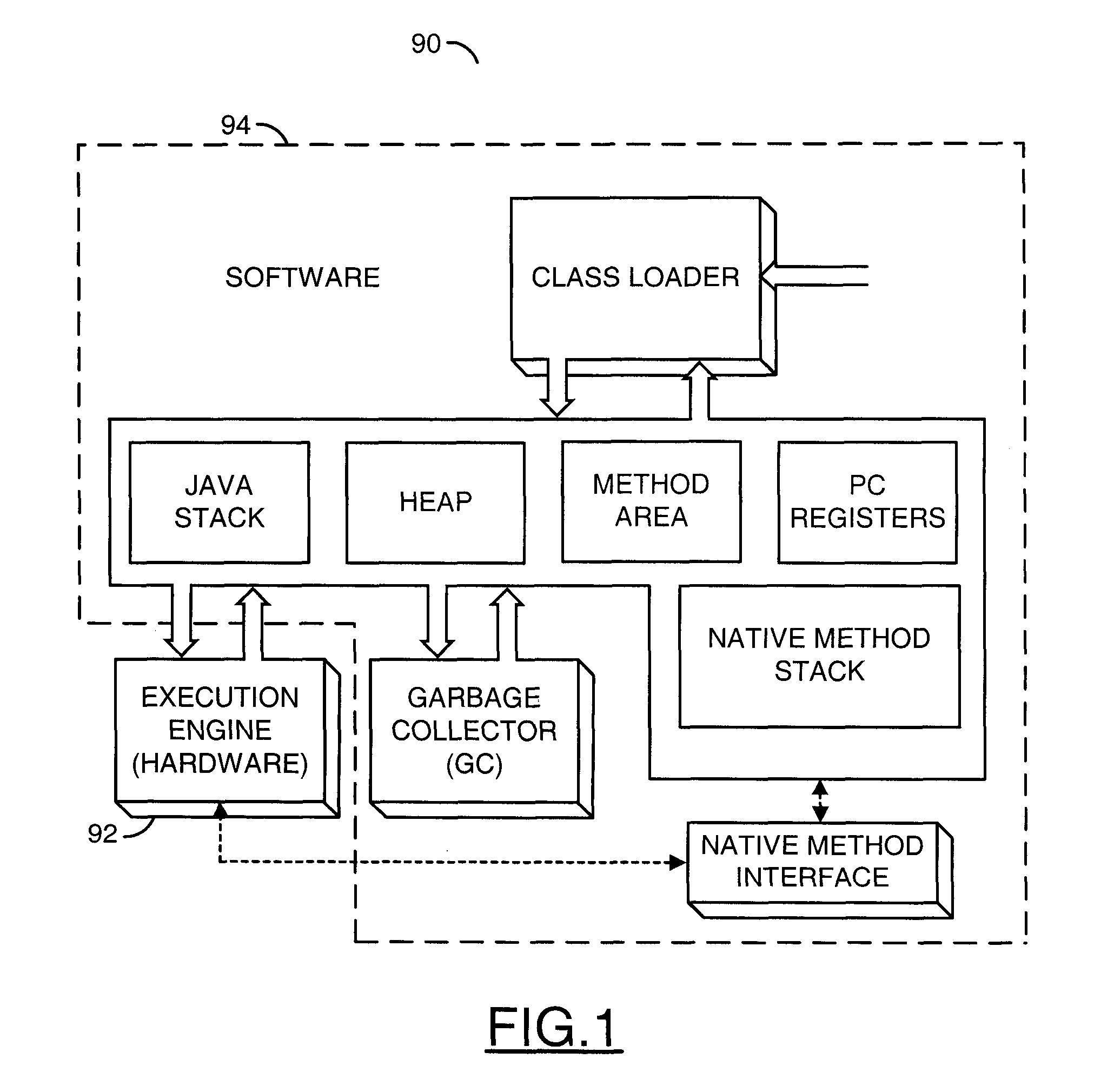Microcode based hardware translator to support a multitude of processors
a hardware translator and microcode technology, applied in the field of programming language translators, can solve the problems of inability to match the performance of applications written in c/c++ and compiled directly into native code, lack of performance, and extra memory foot-print of applications written in java, and achieve the effect of fast execution of java instructions
- Summary
- Abstract
- Description
- Claims
- Application Information
AI Technical Summary
Benefits of technology
Problems solved by technology
Method used
Image
Examples
Embodiment Construction
[0025]Referring to FIG. 1, a block diagram illustrating a Java virtual machine (JVM) 90 implemented in accordance with the present invention is shown. The JVM 90 may comprise a hardware implemented portion 92 and a software implemented portion 94. The software portion 94 is generally responsible for all operations including interpreting the bytecode instructions that the hardware portion 92 performs.
[0026]In a preferred embodiment, the present invention may offer a much better performance than any software only based solution, with minimal memory footprint. In addition, the present invention may maintain compatibility to past designs and preserves the ability to run legacy code. The latter may provide a major advantage over conventional solutions since large investments made in the legacy code may be preserved.
[0027]The present invention may comprise a small hardware block tightly coupled to a processor (e.g., MIPS, ARM, 68K, etc.). The hardware block and appropriate software genera...
PUM
 Login to View More
Login to View More Abstract
Description
Claims
Application Information
 Login to View More
Login to View More - R&D
- Intellectual Property
- Life Sciences
- Materials
- Tech Scout
- Unparalleled Data Quality
- Higher Quality Content
- 60% Fewer Hallucinations
Browse by: Latest US Patents, China's latest patents, Technical Efficacy Thesaurus, Application Domain, Technology Topic, Popular Technical Reports.
© 2025 PatSnap. All rights reserved.Legal|Privacy policy|Modern Slavery Act Transparency Statement|Sitemap|About US| Contact US: help@patsnap.com



